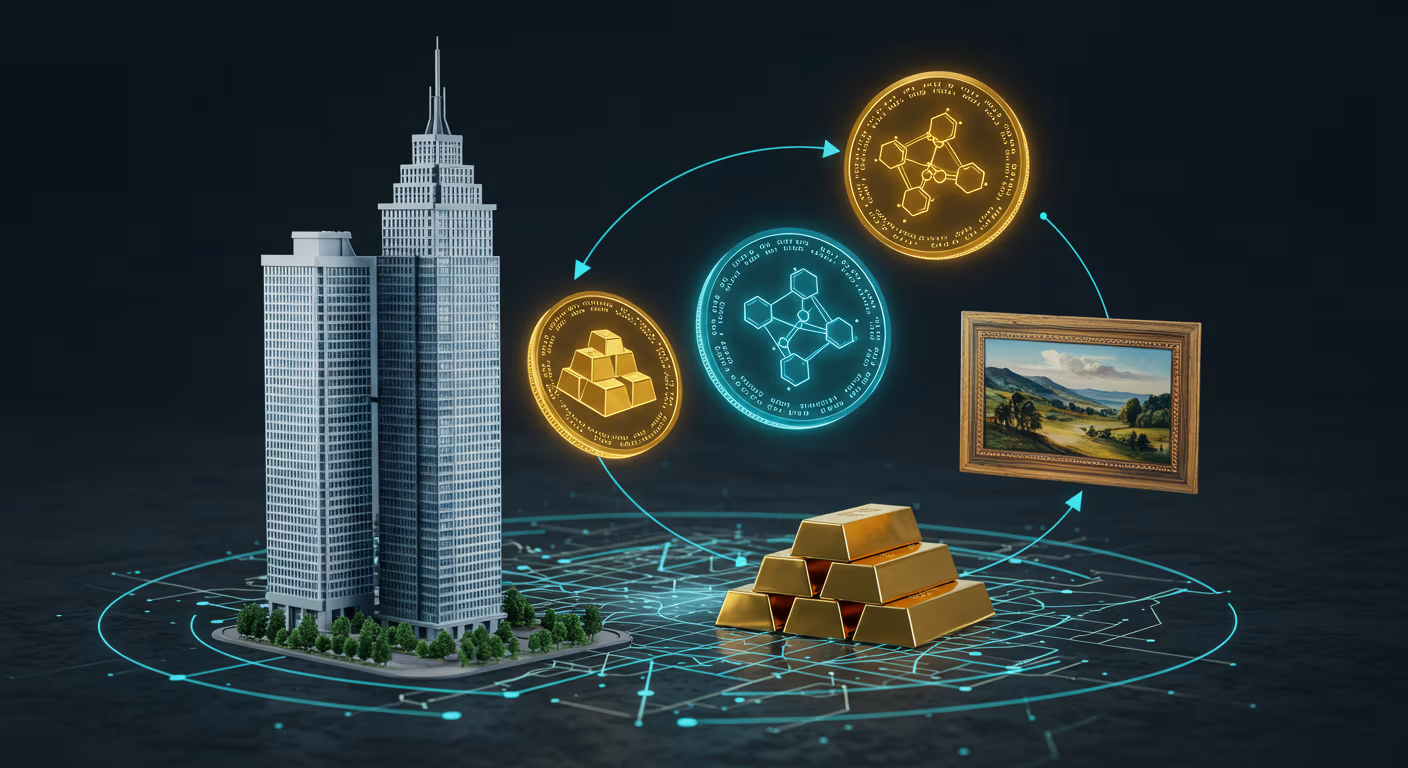In an age where digital innovation is reshaping global finance, asset tokenization stands at the forefront of disruption. It promises to revolutionize how we invest, trade, and own assets—unlocking liquidity, improving transparency, and expanding access to traditionally illiquid markets. By converting real-world assets into blockchain-based digital tokens, tokenization is breaking down long-standing barriers in the financial system and paving the way for a more democratized investment landscape.
From real estate and private equity to fine art, collectibles, and even commodities, asset tokenization is quickly evolving from a novel concept into a transformative force. But what exactly is asset tokenization, and why is it capturing the attention of institutional investors, regulators, and fintech startups alike?
What Is Asset Tokenization?
Asset tokenization is the process of representing ownership rights to real-world assets as digital tokens on a blockchain or distributed ledger. These tokens can be traded, transferred, or held, much like stocks or cryptocurrencies, but they are backed by tangible or intangible assets such as property, artwork, or equity in a private company.
Each token represents a fractional share of the underlying asset. For example, a $10 million commercial building could be tokenized into one million tokens, each worth $10. Investors can then buy, sell, or trade these tokens on digital platforms, unlocking previously inaccessible investment opportunities.
Tokenization relies heavily on smart contracts—self-executing code on the blockchain—to automate processes such as dividend payments, compliance checks, and ownership transfers. This reduces the need for intermediaries and cuts down transaction costs.
Why Tokenization Is Disrupting Traditional Finance
The global financial system has long been plagued by inefficiencies: high transaction costs, long settlement times, limited transparency, and restricted access to high-value assets. Asset tokenization addresses many of these issues head-on.
1. Liquidity for Illiquid Assets:
Real estate, fine art, and private equity are typically difficult to trade quickly due to their illiquid nature. Tokenization introduces fractional ownership, enabling smaller investors to participate and allowing quicker transfers of value through digital marketplaces.
2. Greater Accessibility:
Traditionally, investing in assets like commercial property or venture capital required substantial capital and privileged access. Tokenization lowers the barrier to entry by allowing investors to buy fractional shares with smaller amounts, potentially as low as a few dollars.
3. Transparency and Security:
Blockchain’s immutable ledger ensures that all transactions are recorded, traceable, and resistant to fraud. Investors can verify ownership history and asset valuation without relying solely on third parties.
4. 24/7 Markets and Faster Settlement:
Unlike traditional exchanges, tokenized asset platforms can operate around the clock. Smart contracts enable near-instantaneous settlement, reducing counterparty risk and improving cash flow.
5. Cost Efficiency:
By removing intermediaries like brokers, custodians, and settlement agencies, tokenization can significantly reduce administrative and operational costs associated with issuing and trading assets.
Real-World Applications
The potential of asset tokenization is not hypothetical—numerous real-world implementations are already in motion.
Real Estate:
One of the most popular sectors for tokenization, real estate offers high-value, illiquid assets that are ideal for fractionalization. Platforms like RealT and SolidBlock allow investors to purchase fractional ownership in income-generating properties.
Art and Collectibles:
Tokenization is opening up the art world to a broader audience. Masterworks, for instance, lets users invest in shares of famous artworks. Token holders receive returns when the artwork is sold, without ever having to store or manage the piece themselves.
Private Equity and Venture Capital:
Startups and private companies can tokenize shares to raise capital while offering investors more flexible exit opportunities than traditional private equity investments. This increases capital flow and investor reach.
Commodities and Natural Resources:
Gold, oil, and other commodities can be tokenized to create a digital representation that is easier to trade globally. This has implications for both retail investors and institutional players seeking more efficient exposure to these markets.
Regulatory Landscape: Opportunities and Obstacles
While the promise of asset tokenization is clear, the regulatory framework is still evolving. Different jurisdictions classify tokens in different ways—some as securities, others as utility tokens or commodities.
Regulators such as the U.S. Securities and Exchange Commission (SEC), the European Securities and Markets Authority (ESMA), and the Monetary Authority of Singapore (MAS) are actively studying tokenization to develop compliant frameworks. The challenge lies in balancing innovation with investor protection.
Key regulatory challenges include:
- KYC/AML Compliance: Platforms must ensure Know Your Customer and Anti-Money Laundering processes are integrated into the token lifecycle.
- Custody and Ownership: Questions remain about who holds legal title to the underlying asset and how token-based ownership is enforced in courts.
- Interoperability and Standardization: Without common standards across platforms and jurisdictions, cross-border trading of tokenized assets remains complex.
Despite these hurdles, regulatory interest in supporting tokenization is growing, particularly as central banks and large institutions begin to experiment with digital asset infrastructures.
The Role of Institutions and Infrastructure
Major financial institutions are no longer on the sidelines. BlackRock, JPMorgan, Citi, and Goldman Sachs are investing heavily in tokenization research and pilot programs. The development of blockchain-based infrastructures such as JPMorgan’s Onyx platform and the European Investment Bank’s tokenized bond issuance demonstrate how seriously the industry is taking this evolution.
Meanwhile, blockchain protocols like Ethereum, Avalanche, and Polygon are laying the technical foundation for scalable, secure tokenized asset ecosystems. Tokenization platforms must address scalability, compliance integration, and interoperability if they are to support the trillions in assets potentially moving to the blockchain.
Risks and Considerations
Despite its promise, asset tokenization is not without risk. Security breaches, smart contract bugs, and platform insolvencies could jeopardize investor funds. Additionally, if liquidity is concentrated in a few platforms or tokens, market manipulation could become a concern.
Investors must also be aware of the technological learning curve, custody risks, and unclear legal enforcement in some jurisdictions. The need for due diligence is as high as in traditional finance—if not higher.
The Road Ahead
Asset tokenization represents one of the most significant shifts in the financial landscape since the emergence of electronic trading. It offers a future where investment is more inclusive, transactions are more efficient, and ownership is more transparent.
As regulatory clarity improves and infrastructure matures, we are likely to see explosive growth in tokenized markets. The next decade could witness trillions of dollars’ worth of assets—real estate, stocks, bonds, commodities—transition into digital tokens.
For investors, institutions, and regulators alike, the key lies in embracing this innovation while carefully managing the associated risks. Asset tokenization is not just a trend—it’s a paradigm shift, redefining what it means to own and trade value in the digital age.





